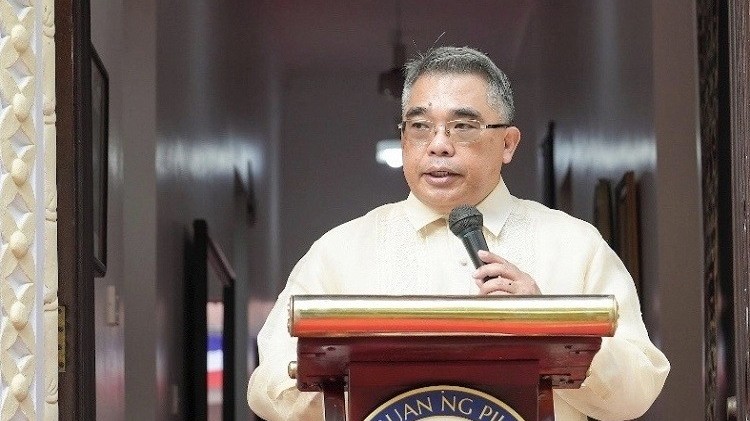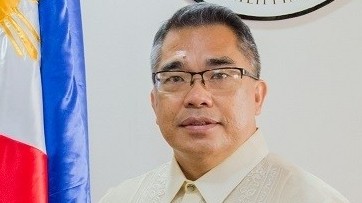
Indigenous Fabrics: A testament of common tradition between the Philippines and Vietnam
Latest
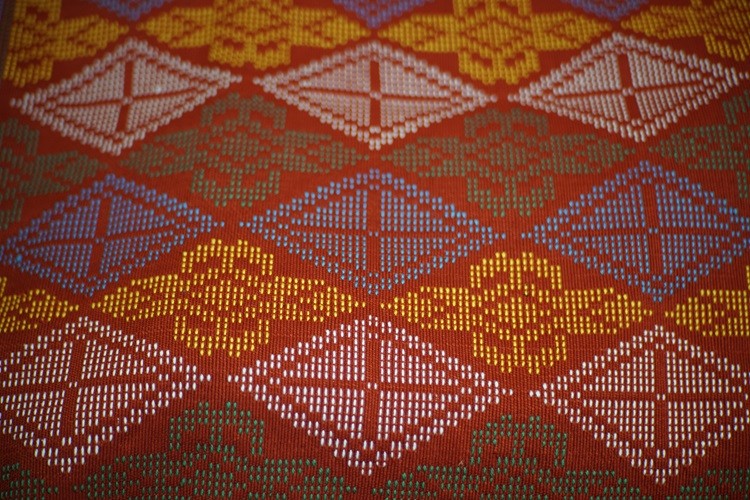 |
| There are more than 80 major ethnolinguistic groups in the Philippines and each has its own traditional textiles. (Photo: The Philippines's Embassy in Hanoi) |
Reflecting the mastery and the vastness of knowledge
There are more than 80 major ethnolinguistic groups in the Philippines and each has its own traditional textiles and unique weaving patterns and techniques that have been passed down from generations within each tribe and society.
Weaving has been an art form reflecting the mastery and the vastness of knowledge of different generations and familial lines in as much as their clothing style and textile patterns have served as identifiers of social rank, kinship, or tribal lineage. From cradle to death, traditional textiles have been used as well as in sacred ceremonies and in daily mundane activities.
Among the known traditional Philippine textiles include the Inabel of the Ilocos region in Northern Philippines as well as the Ga’dang and Itneg from the mountainous region of the Cordillera.
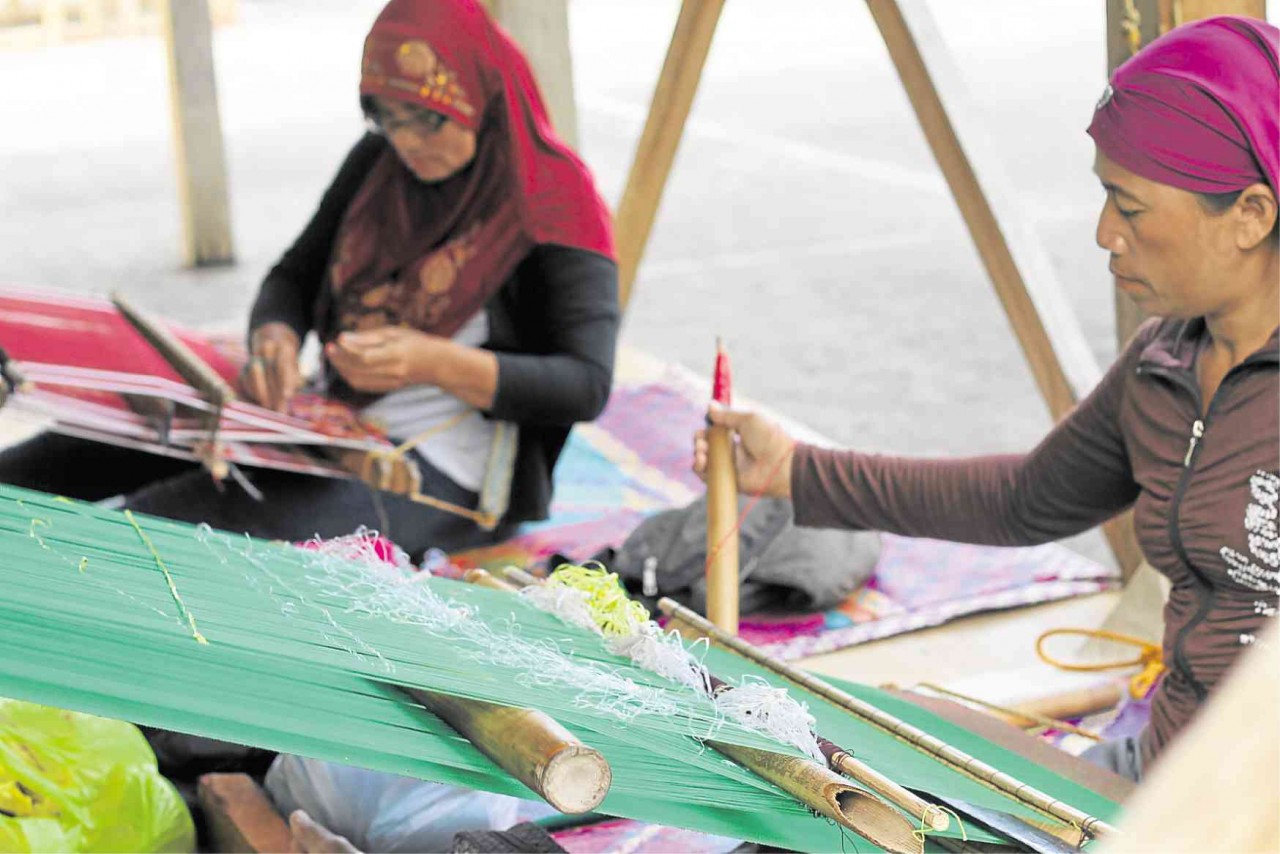 |
| Weaving has been an art form reflecting the mastery and the vastness of knowledge of different generations and familial lines. (Source: Inquirer.net) |
From the central Philippines in the Visayas region, the Hablon from Iloilo has been gaining recognition internationally for its versatility and high demand as fashioned dresses, shawls and bags.
Coming from Mindanao, the T’nalak of the T’bolis in South Cotabato is considered sacred, because the designs are believed to be bestowed by the gods. Yakan has also a long tradition of weaving, famous for its bold colors and large geometric patterns.
Other notable handwoven materials from southern Philippines are the Inaul of Maguindanao, and the sleeping mats of the Tagolwanen and Sama Badjao and theTutup of Tawi-tawi.
Every piece of handwoven creation is done meticulously with its own purpose and symbolism. Each special woven product showcases the culture, belief system, ideology and creativity behind the different indigenous groups that created them.
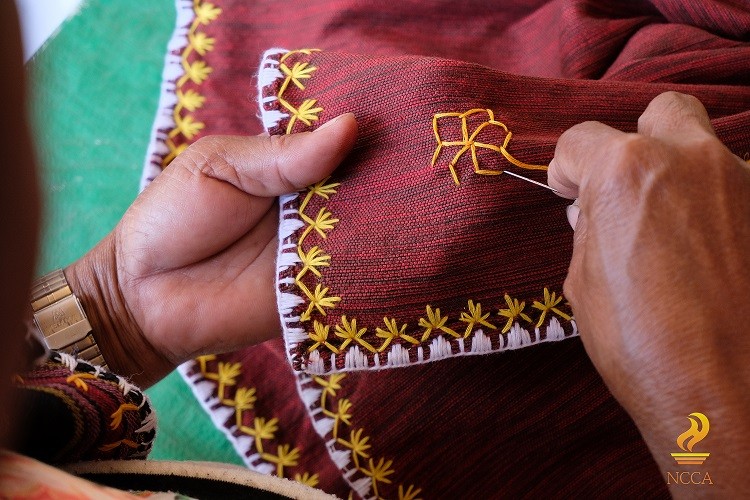 |
| Every piece of handwoven creation is done meticulously with its own purpose and symbolism. |
Similarities of the two nations
Like the Philippines, Vietnam also shares a culture of weaving. With 54 ethnic groups, Vietnam has a rich history of silk, brocade and embroidery weaving.
As neighboring countries whose ancestors once traded and interacted, the relations between the Philippines and Vietnam date back in centuries. Ships from Luzon in the Philippine archipelago came to the port of Vietnam in the Gulf of Tonkin to trade, while in Mindanao, the Orang Dampuan tribe was said to have descended from the Cham seafarers from Southern Vietnam who settled in Sulu.
These early interactions through trade may have influenced the weaving practices in the two countries. In northern Vietnam, the Thai and Muong people share similar symmetrical patterns with the Kalinga weaves in the mountainous area of the Cordilleras. Like the Kalinga, the Thai and Muong groups incorporate symbols of nature in their designs and execute in colorful motifs.
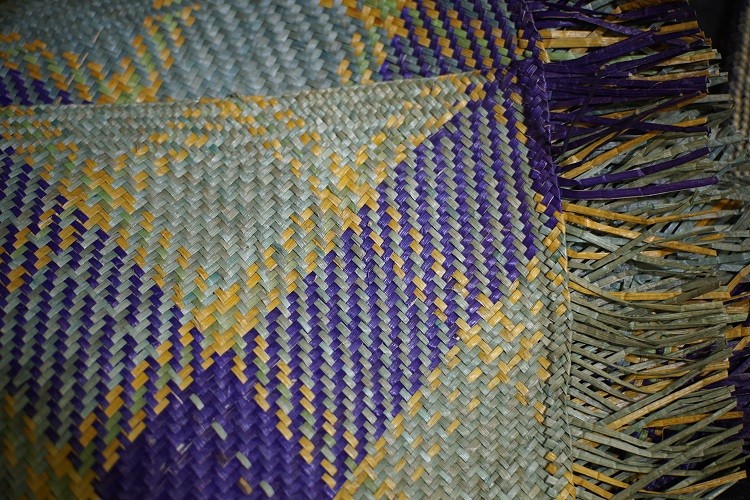 |
| Each special woven product showcases the culture, belief system, ideology and creativity behind the different indigenous groups that created them. |
In southern Vietnam, the Cham people of the Ninh Thuan province use cotton and silk in their fabrics. Their woven materials are often vibrant in color with geometric patterns similar to the Yakan weave from Mindanao.
Indeed, looking at both Philippine and Vietnamese woven products, one can see similar or common designs, patterns, motifs, colors, materials and weaving style. Viewed side-by side with each other, one can sometimes hardly discern which of these products are from the Philippines and which ones are from Vietnam.
Traditional textiles offer glimpses of the heartwarming beauty of the peoples from both the Philippines and Vietnam. But perhaps more importantly, they help provide a tangible and colorful way for a better understanding of our distinct yet somewhat common landscapes, peoples, values, and traditions.
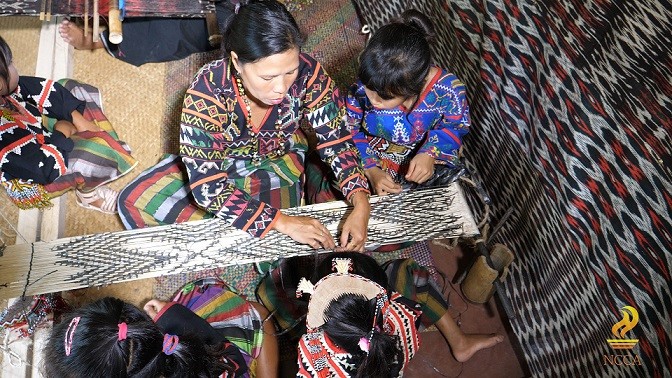 |
| Indeed, looking at both Philippine and Vietnamese woven products, one can see similar or common designs, patterns, motifs, colors, materials and weaving style. |
As we unravel our weaving culture and behold our indigenous textiles, we come to realize that despite being separated by a vast sea and numerous mountains, our respective heritages were interwoven through meaningful relationships and interactions by our ancestors.
| Through ups and downs, fabric production is still maintained, an art deeply rooted in the lives of the Filipino people. Each group of people and each region has different ways of weaving and using different materials. Weaving is a long-standing traditional profession in the Philippines. All Filipinos are aware of the artistic value of complex, labor-intensive works. Therefore, they are very diligent in weaving on looms. From available natural materials, with rich pattern creation techniques, through the skillful hands of Filipino weavers in each different island region, textile products with cultural depth and aesthetics have been created. Decorative patterns on traditional Philippine textiles reveal stories, reflecting the worldview, beliefs and aspirations of the people through images of saints, gods, characters in epics and the environment around them. Although Philippine weaving has a long history and has been passed down through generations with the preservation of traditional techniques, it is still developing in contemporary life and is integrating into the global environment. |




